Also available in: Deutsch
Sri Lanka really knocked our socks off. We traveled with our backpacks for almost four weeks across the teardrop-shaped island, located southeast of India, experiencing plenty of unique moments. If you’ve come across this article because you may have just booked your flights to Sri Lanka, you’re surely dealing with some questions about traveling to the Indian Ocean now.
5 Important Infos for Your Sri Lanka Trip
The following article will therefore answer five important questions in advance so that you can fully enjoy your trip. However, if you don’t yet have tickets in hand, it’s possible that after reading this article, you’ll find yourself wanting to feel Sri Lankan sand beneath your feet soon. Hello wanderlust!
How to Get To Sri Lanka
Since Sri Lanka is an island, your travel options are limited to flying or traveling by sea. From Germany or Europe, there are some direct flights to the capital Colombo, as well as many options with a stopover. You can also get to Sri Lanka quite easily from other Asian countries like Thailand, Malaysia, Singapore, etc.
On Skyscanner, you can check out numerous connections to Sri Lanka, compare prices, and buy tickets. Another source of information, especially for traveling from within Asia, would be our partner 12go.asia.
An alternative method for getting to Sri Lanka is by ship. There are a few routes from India, but they can be very time-consuming. A cruise could be an option if you prefer to travel by ship.
1. Sri Lanka’s Regions – South or East?
The answer to this question depends first on your travel season. We landed in Colombo in mid-March, which meant that the travel season for the southwest was coming to an end because by mid-April, heavy rains make things quite unpleasant there, while the east is figuratively roasting. As soon as the eastern travel season is over (from November on), you can head back south, since the sky there is again lit by warm sunshine.
Both regions of the island have breathtaking spots. Still, we believe that the southwest has more varied places in store, like Tangalle, Mirissa, Hikkaduwa, Galle & Co. The east is mainly a surfing mecca, mostly associated with Arugam Bay. Even though we traveled to the southwest a bit “late” and most tourists were already on their way home, we were only caught in a rain shower once, and the positive side effect was that prices didn’t explode as much as they do during peak season.
The inland and highlands, on the other hand, can be visited year-round and feature plenty of colonial towns, such as those within the cultural triangle enclosed by Anuradhapura, Polonnaruwa, and Kandy. You also shouldn’t skip highlights like climbing Adam’s Peak in Dalhousie, as well as the ancient monolith Sigiriya or the Pidurangala Rock. Visiting at least one national park should definitely be on your list when you’re in Sri Lanka!
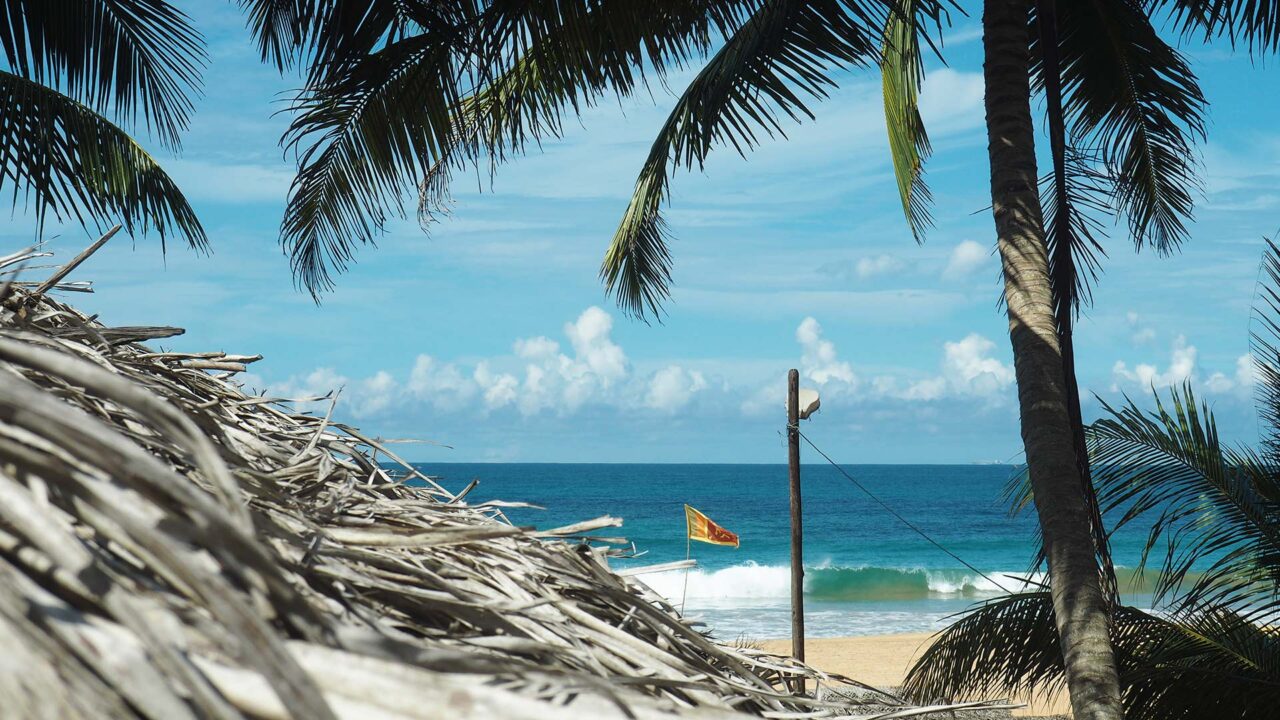
2. The Coast or The Highlands?
That’s exactly what makes the country so beautiful – its diversity. After arriving in Colombo, it would make sense to head into the highlands first. For example, Sri Lanka’s cultural capital Kandy is an option, home to the famous Temple of the Tooth. Since we couldn’t wait to feel sand between our toes, we initially explored the southwest coast, then went back through Colombo to the highlands. Looking back, that route didn’t make much sense because of the detour via Colombo, but hey, being on vacation means doing whatever you feel like.
From Kandy, you can visit the cultural triangle, take a day trip to the Sigiriya monolith, or check out the less-visited Pidurangala Rock. We’d also recommend a night in Dalhousie, a small mountain village where you can start your climb up Adam’s Peak.
After that, you could give your tired legs a rest in the highlands among green tea plantations, relax a bit, and then continue on to the idyllic backpacker village of Ella. From there, you’ll finally say hello to dream beaches!
On the way to the island’s southwest coast, possibly along Tangalle, Mirissa & Hikkaduwa, you might fit in a visit to the Uda Walawe National Park.
As you can see, Sri Lanka has fascinating corners in almost all regions, and the best part is that the country covers an area only about the size of Bavaria, making it effortless to explore extensively.
The most important thing: all the stops mentioned are secondary. What really matters is that you visit Sri Lanka’s coastal paradise beaches and also explore its culturally rich inland and highlands.
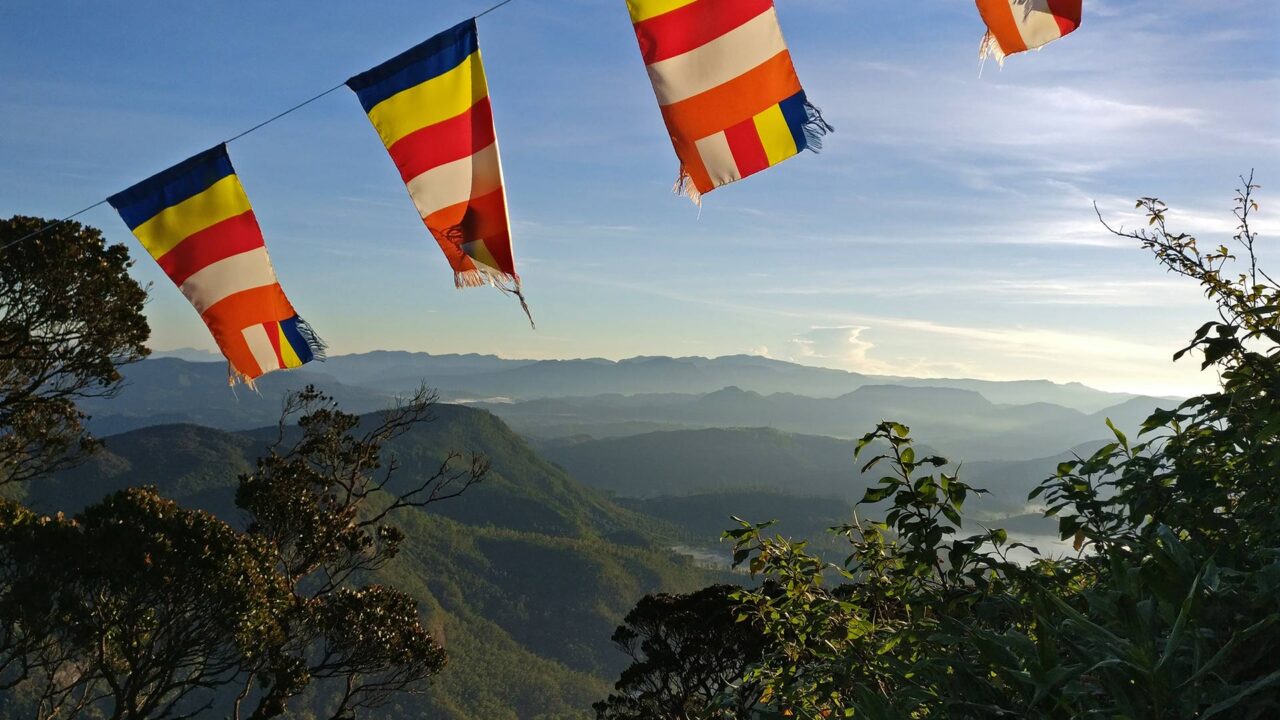
3. Yala or Uda Walawe National Park?
If you’re visiting Sri Lanka, you definitely can’t miss a safari. Now the little question arises of which park to choose. You’ll likely hear mostly about Yala National Park because there’s a chance of spotting a leopard there. Meanwhile, Uda Walawe National Park (Yala’s “younger sibling”) is said to give you more elephant sightings.
Armed with this knowledge, we visited Uda Walawe Park on our trip, which on that day was hardly visited by tourists, while we got a close look at many elephants. Early in the morning, entire families roamed along in the first rays of sunshine, searching for shrubs and other plants for breakfast.
Yala National Park is more famous, bigger, and more touristy than Uda Walawe, so you should be aware of the higher tourist traffic there.
To get to either park, you often have to make a small detour, which is definitely worth it. We’d visit Uda Walawe National Park again any time because we never felt like mere guests in a park. With so few tourists around, we felt we weren’t intruding too much in the older four-legged creatures’ living space and respected their natural lives by observing their daily routines from not too close up.
Someone we met during our travels in Sri Lanka said he experienced the exact opposite in Yala National Park, finding it too crowded and completely overpriced for its high entrance fee.
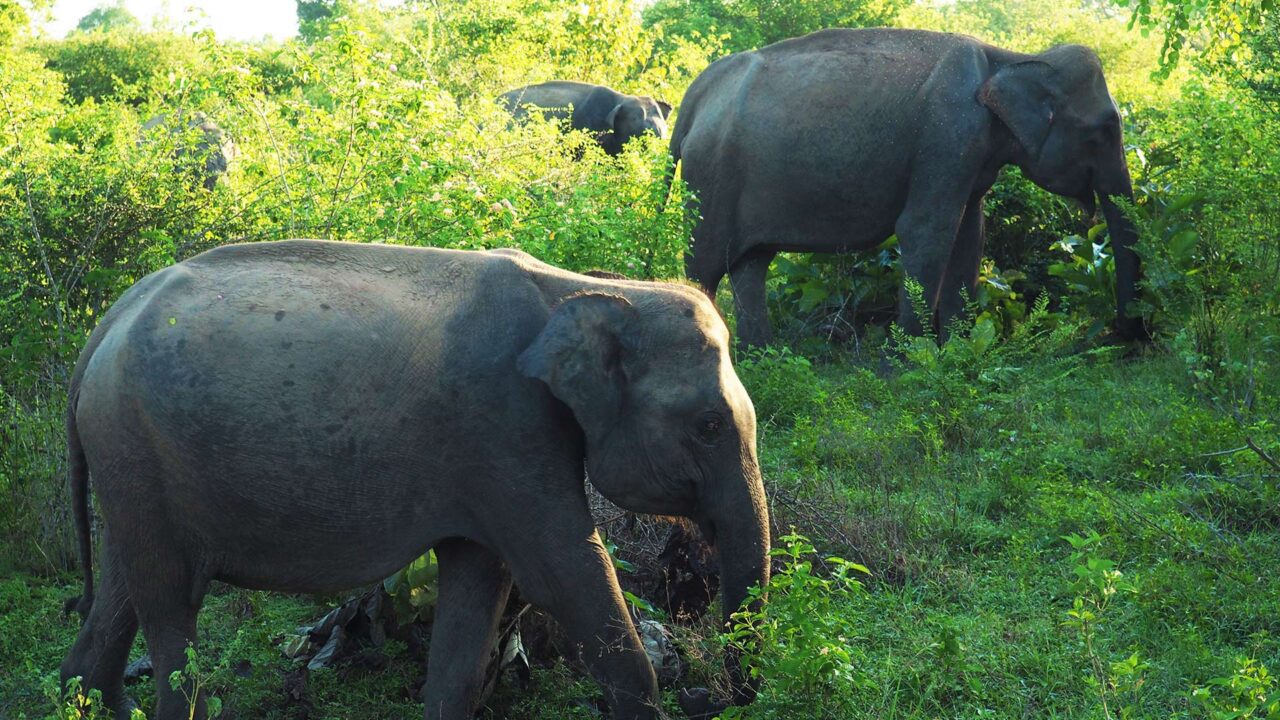
4. Sri Lankan or Western Cuisine?
That’s an easy choice: Sri Lankan cuisine. Sri Lanka’s food is just incredible! Spicy, diverse curries, freshly chopped Kotthu Rotti in various forms, and string or egg hoppers with coconut Sambal for breakfast. There’s so much to explore in terms of flavors and spices.
The food in Sri Lanka is not only amazingly delicious, but there are also many vegetarian dishes on the table. The meals are fresh and varied, and most importantly, noticeably cheaper than Western food. We quickly formed a habit: as soon as we arrived in a new town, we looked for the nearest fruit seller.
Tip: Buy some bananas, a handful of passion fruits, a mango, and grab a fork and knife. Then you can enjoy a delicious, fresh fruit salad at the beach for lunch. Wondering what refreshing drink you could have? A cool “Virgin Coconut”!
5. Rickety Buses or Decommissioned Canadian Trains?
After sharing a few paragraphs about my experiences in Sri Lanka, I just couldn’t resist spontaneously checking flight prices. This wonderful island truly captivates its visitors. The people constantly wear a smile, are helpful, and there’s no better way to get closer to their culture than by train. Which leads us to our next point.
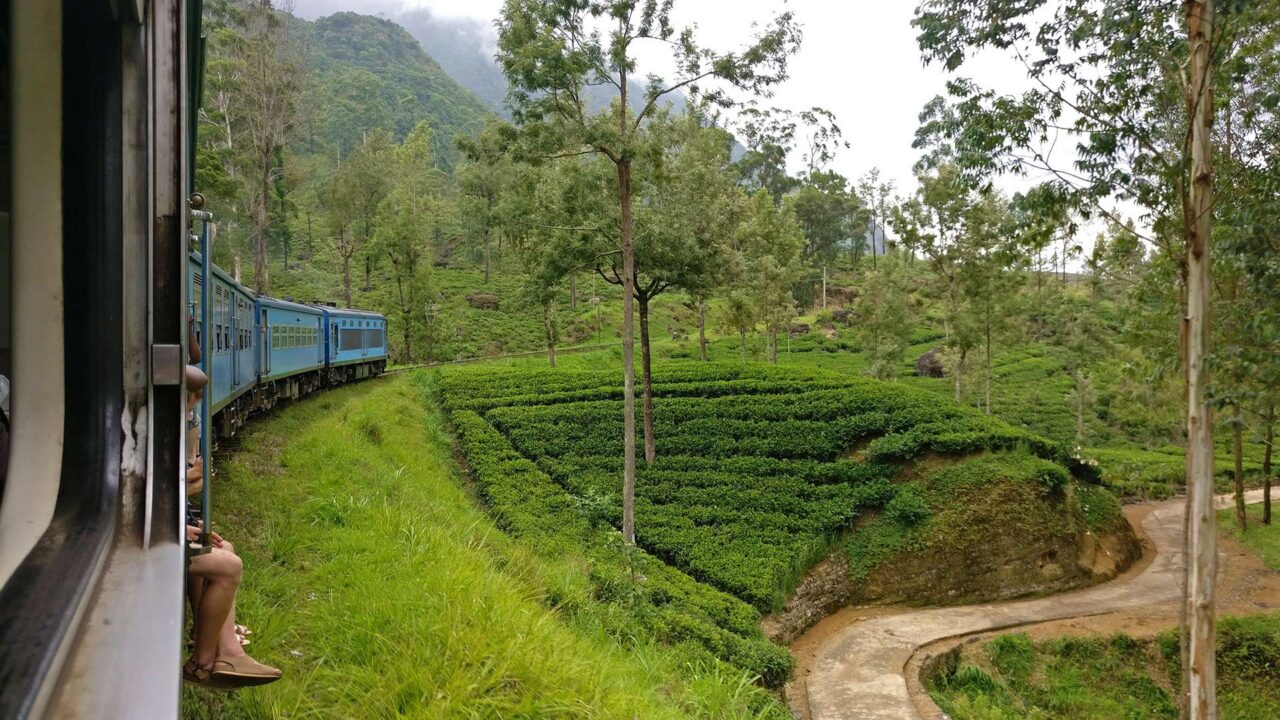
From Colombo to Matara (all the way in the south of the island) and from Sri Lanka’s capital eastward to Ella – these are the most famous train routes in Sri Lanka. Train journeys in Sri Lanka are more than just a way of getting around; they’re magical. Anyone who has visited Sri Lanka first talks about the wonderful rides through green hill landscapes and the singing vendors on the trains. In the decommissioned Canadian trains, you become part of the society, meeting fascinating people.
It’s best if you don’t ride first class but buy a second- or third-class ticket. That way, you can chat with locals and get a feel for life here, observe different situations, and try snacks from the roaming vendors.
Since Sri Lanka’s railway network by far doesn’t cover the entire country, you’ll have to take old, rickety buses for some routes – like the ones leading to the two national parks mentioned previously. I, personally, found the bus rides a bit unpleasant, as the bus drivers seem to compete over who can navigate the narrowest of roads at the highest speed.
Gazing down a steep drop next to the road was our constant companion during the journey. Not a pleasant feeling. Still, we always (safely) got from point A to B by bus.
In our view, if possible, choose the train because traveling that way lets you experience Sri Lanka’s interpretation of “open door policy.” What a breathtaking view!
We can wholeheartedly recommend traveling to Sri Lanka! Witnessing the unique sunrise over Adam’s Peak as the dense morning fog cleared was definitely one of the most unforgettable experiences of our lives. The palm-lined beaches around our beloved Hikkaduwa, the spicy Dhal Curry on the beach, and a cool beer during fiery red sunsets. Beautiful waves that excite surfers, wave riders who can enjoy themselves both in the south and in the east.
Oh, Sri Lanka. I hope to see you again soon!
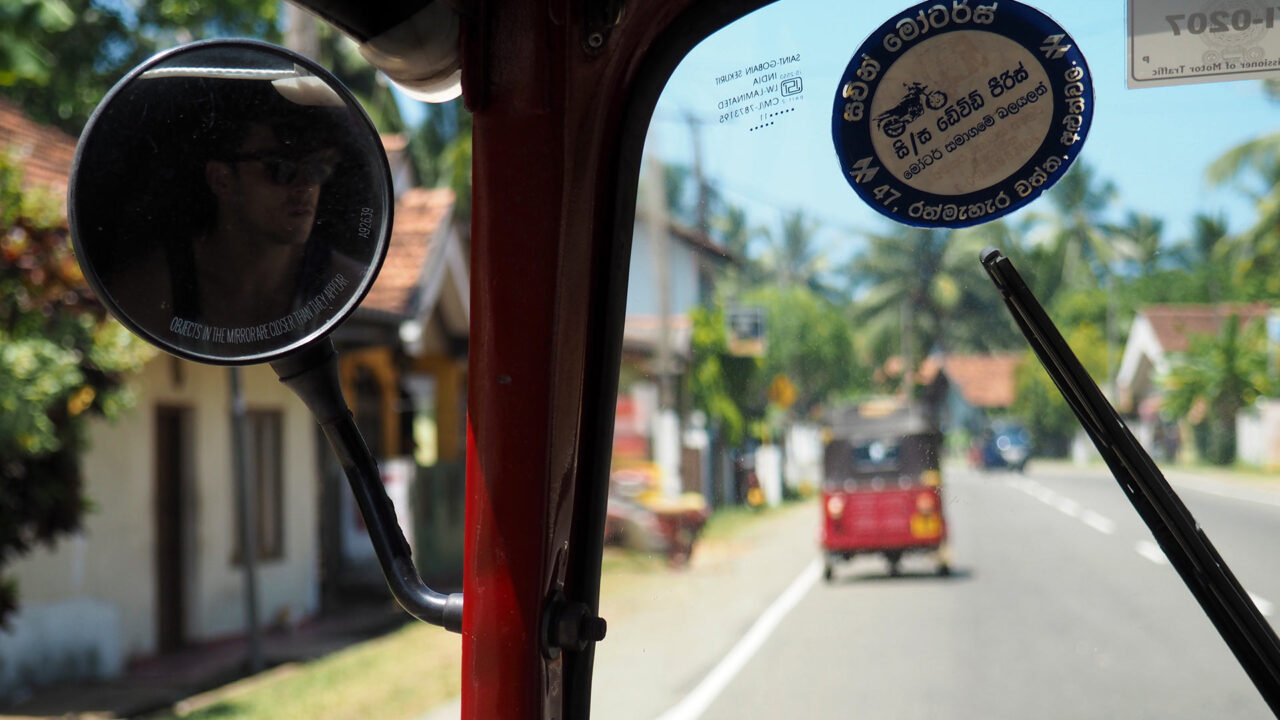
About the Author

This is an article written by Julian from wavesnbackpack. Along with his girlfriend Ani, he spent nearly four fascinating weeks on the small island in the Indian Ocean. Shortly afterward – surprisingly – they launched their brand-new travel and surf blog, where they’ve been collecting exciting stories from travelers all over the world ever since.
Sri Lanka: Tours And Tickets
Do you prefer to travel with a guide who knows the area very well? Then we recommend a guided tour with a local. This way you can get to know Sri Lanka in a completely different way. GetYourGuide offers a wide selection of exciting tours for many places in Sri Lanka.

Gast
This is a guest post. If you have any questions or suggestions on the topic, simply write them in the comments or contact the guest author directly on his/her blog.